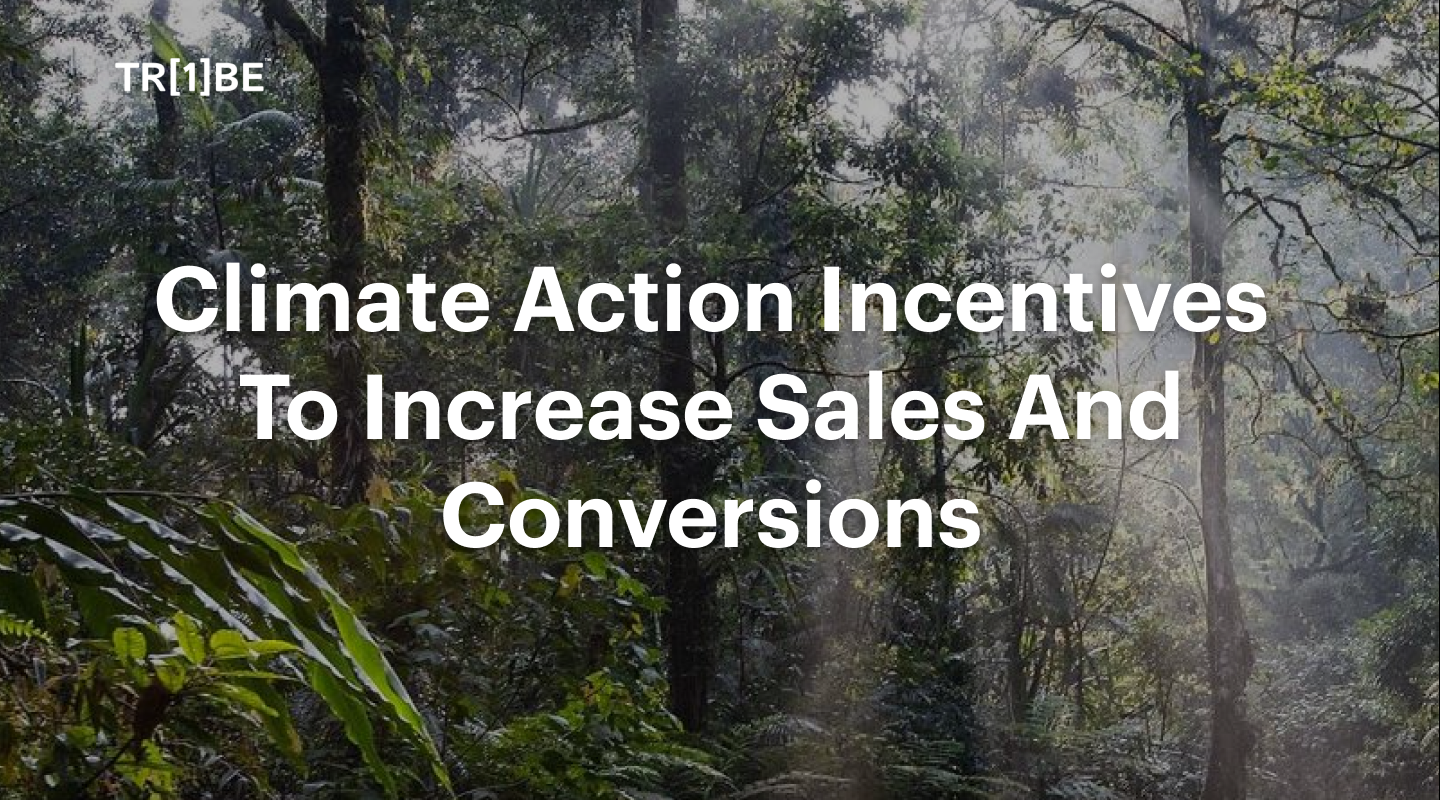
Learn how you can use One Tribe’s climate action incentives to build ESG campaigns and improve your relationship with customers.
Climate change is one of the most pressing challenges of our time. The scientific community has been warning about the dangers of global warming for decades, and the need to take action has now become critical. However, where businesses are concerned, many companies are hesitant to take action under the belief that it will negatively impact profits.
In the last ten years, consumer demand for sustainable products has increased, with 30% of customers wanting to improve their impact on the environment and 22% wishing to reduce their carbon footprint. Consumers are increasingly concerned about the environmental impact of the products that they buy, and they are even willing to pay more for products that are eco-conscious.
This is where climate action incentives and initiatives come in. We’ll explore the value of using climate action incentives and initiatives to increase sales, and how One Tribe is helping businesses to become more sustainable and increasing sales and conversions.
One of the biggest challenges that companies face is the need for instant sustainability solutions. Businesses want to see results quickly, and they are often hesitant to invest in long-term sustainability initiatives that cost money and take years to pay off. This is where climate action incentives can be particularly valuable.
By offering reward-based incentives for sustainable practices, companies can encourage their employees and customers to make better environmentally conscious choices. For example, a company might offer to protect trees on the behalf of any landing page visitor that signs up to their email newsletter. These types of incentives can be very effective in promoting sustainable behaviour because they provide an immediate reward for taking action to protect the planet.

According to a 2019 survey by Nielsen, 73% of global consumers say they would change their consumption habits to reduce their impact on the environment. This represents a huge opportunity for companies that are willing to invest in sustainability and shows a far more successful incentive opportunity over offering your typical 10% eCommerce discount.

eCommerce brand Goose Studios found that using One Tribe’s climate action incentives increased newsletter sign ups by over 29%. Saving trees with every item sold and offering incentives to join the newsletter helped Goose Studios achieve their ESG targets. The brand has also been able to drive more revenue with improved conversion rates, reduce acquisition costs and improve customer satisfaction.
Brands and businesses want solutions that can help them quickly become more sustainable without disrupting their operations or increasing costs. This is where climate action incentives are able to strike a balance between delivering large impact for low cost.
Climate action incentives and initiatives can help brands and businesses reduce their carbon footprint, protect nature, maintain ecosystems and promote social and economic opportunities. By implementing these solutions, brands and businesses can quickly become more sustainable while also meeting consumer demands for sustainable products.
One Tribe’s climate action technology can be installed in under 15 minutes offering a range of features that help brands to decarbonise their business operations. The in-app dashboard creates a space where brands can manage their impact statistics, emissions data, and project donations easily and efficiently.
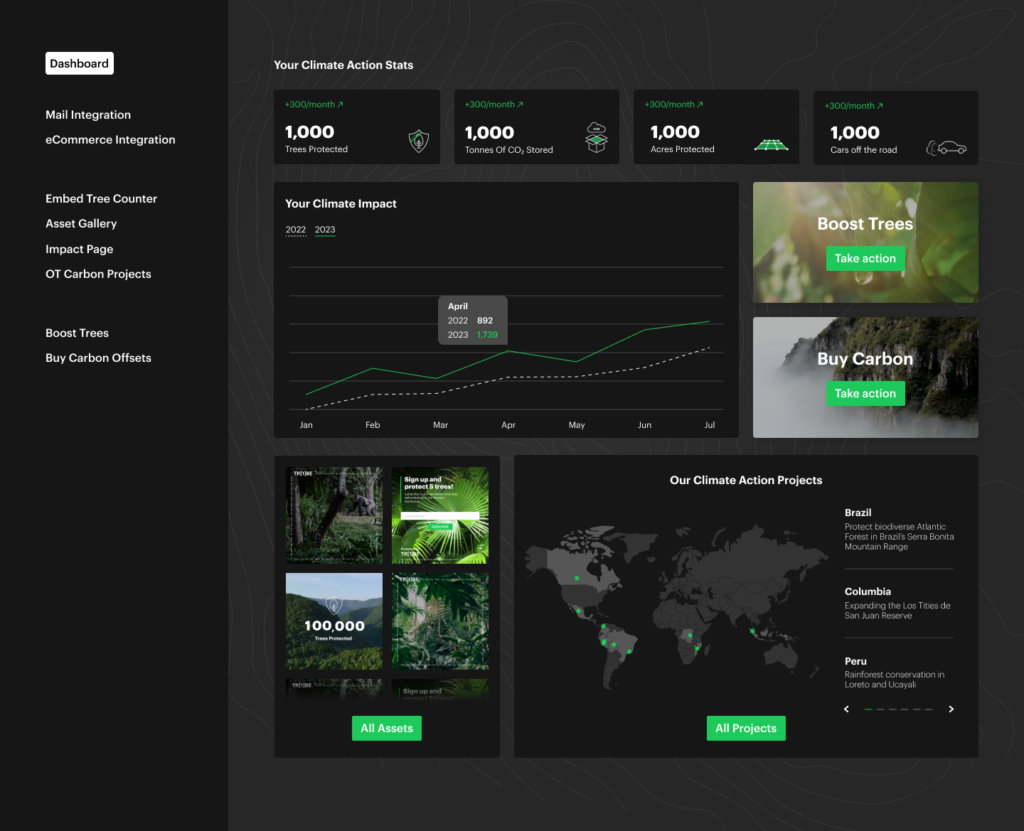
One of the most effective ways for businesses to take climate action is by funding nature-based conservation projects. Forests and soil have high carbon sequestration rates, meaning they are able to absorb large amounts of carbon dioxide from the atmosphere. By protecting and restoring forests, businesses can help mitigate the impact of climate change and contribute to carbon reduction efforts that will help them achieve their ESG targets.
There are many ways that businesses can get involved in land conservation projects including working with specialists skilled in building and developing projects with carbon reduction data available from the project managers. One Tribe develops and implements conservation projects, led by experienced project developers and Indigenous communities that can help businesses identify opportunities to invest in effective conservation solutions.
Funding forest conservation projects is a way for businesses to support the protection of important natural resources, while also demonstrating their commitment to sustainability and environmental responsibility. Investing in land conservation projects long term will ultimately help businesses to meet regulatory requirements related to carbon emissions and demonstrate compliance with new governmental environment regulations.
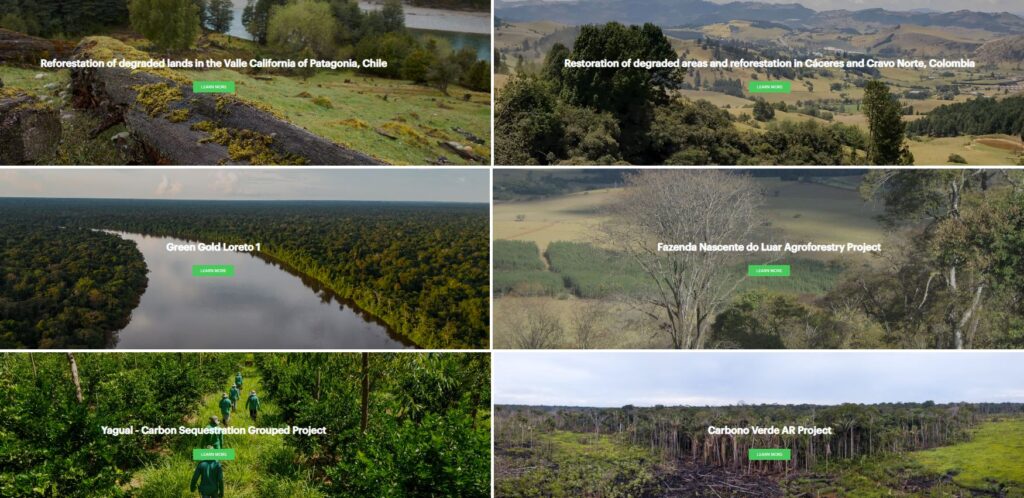
Reducing complex data down into quantifiable measurements including number of trees protected and car emissions removed is a conversion tool that One Tribe uses to help brands and businesses measure their impact more effectively. Trees absorb carbon dioxide from the atmosphere and store it in their biomass. By protecting trees, brands and businesses can effectively lower their carbon emissions and overall footprint, helping to reduce the impact of climate change.
One Tribe works with brands and businesses to plant trees in areas that need reforestation. Tree protection and reforestation are effective strategies for mitigating climate change by sequestering carbon dioxide. Businesses can use tree protection and reforestation as a strategy to reduce their carbon footprint and achieve sustainability goals. The Science Based Targets initiative recommends that businesses consider investing in forest-based carbon offsets as part of their emissions reduction strategies that will improve overall sustainability.
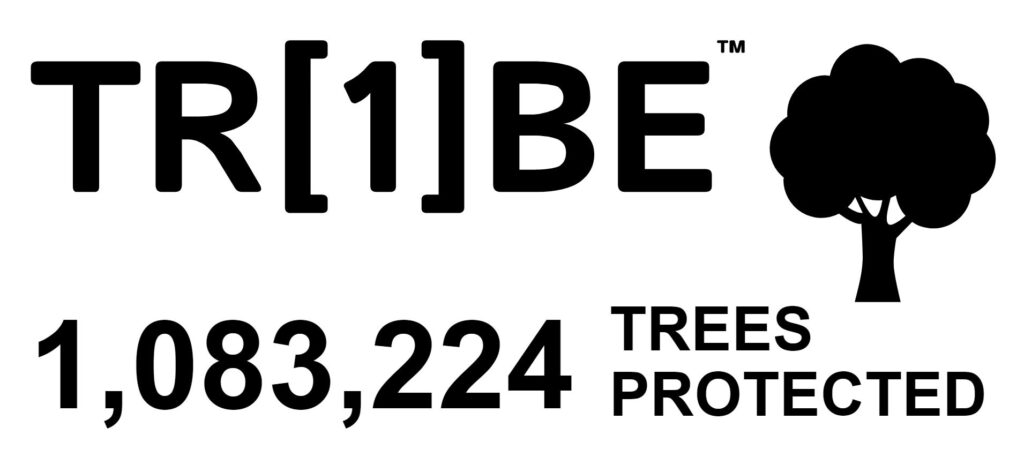
One Tribe leads conservation partners specialising in reducing carbon using forests and natural ecosystems. Through our partnerships, we create and support forest conservation projects that deliver environmental, social, and economic benefits. These projects are designed to be first nation owned and governed by Indigenous people, promoting Indigenous sovereignty and creating economic opportunities for First Nations communities.
Nature based solutions are currently the best solution to help brands tackle climate change and reduce their carbon emissions on a large scale. One Tribe’s carbon marketplace helps businesses to source and purchase certified voluntary carbon offsets safely and securely from the world’s leading verified project providers. We take care of the entire process, including Voluntary Carbon Market feasibility studies, assessments, validation and verification process at no cost to landowners. By purchasing carbon credits, brands and businesses can offset their carbon emissions and achieve net zero targets.
One Tribe has worked on conservation projects throughout the world to support hundreds of businesses to meet their sustainability objectives and reduce their emissions using conservation and improved forest management projects.Our recent partnership with global banking group Santander was pivotal in helping business leaders to understand more about carbon and enable thousands of businesses across the UK to take their first or next steps towards net zero.
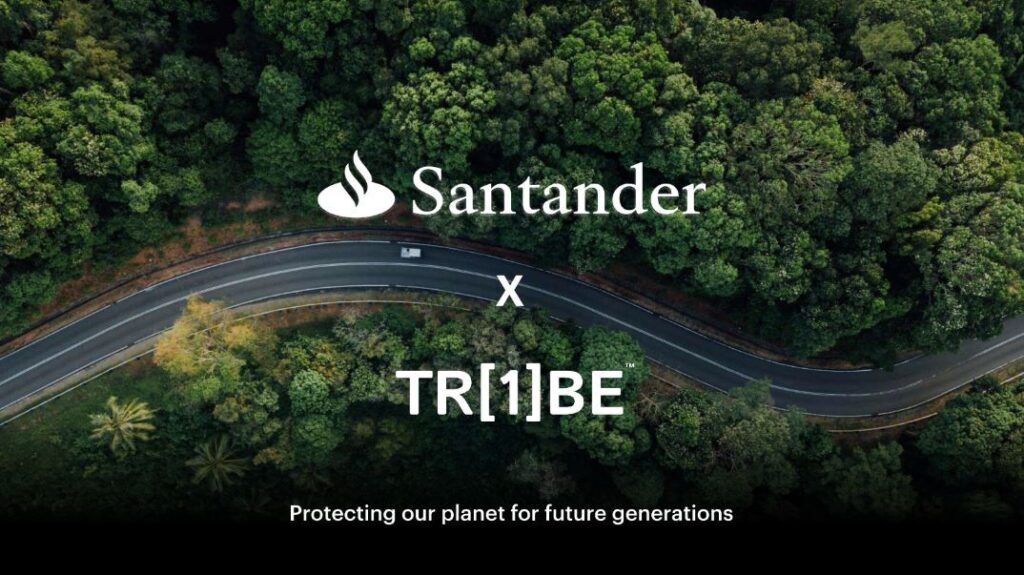

Increase Sales
By investing in climate action initiatives including tree protection, companies can not only reduce their carbon footprint but also promote their commitment to sustainability, attracting customers who prioritise environmental responsibility.
Donating a portion of sales to conservation projects means businesses are able to demonstrate their commitment to protecting the environment while also engaging with new and existing customers who share those same values. Customers are increasingly looking to support brands that prioritise sustainability, and investing in tree protection is a tangible way for businesses to increase sales and acquire new customers.
Koi Footwear is an environmentally conscious, cruelty-free footwear and accessories brand that uses 100% vegan leathers throughout their designs. Working with One Tribe, Koi Footwear was able to launch a successful climate action campaign that increased product sales in just seven days selling over 200 climate action promoted products in just one week.
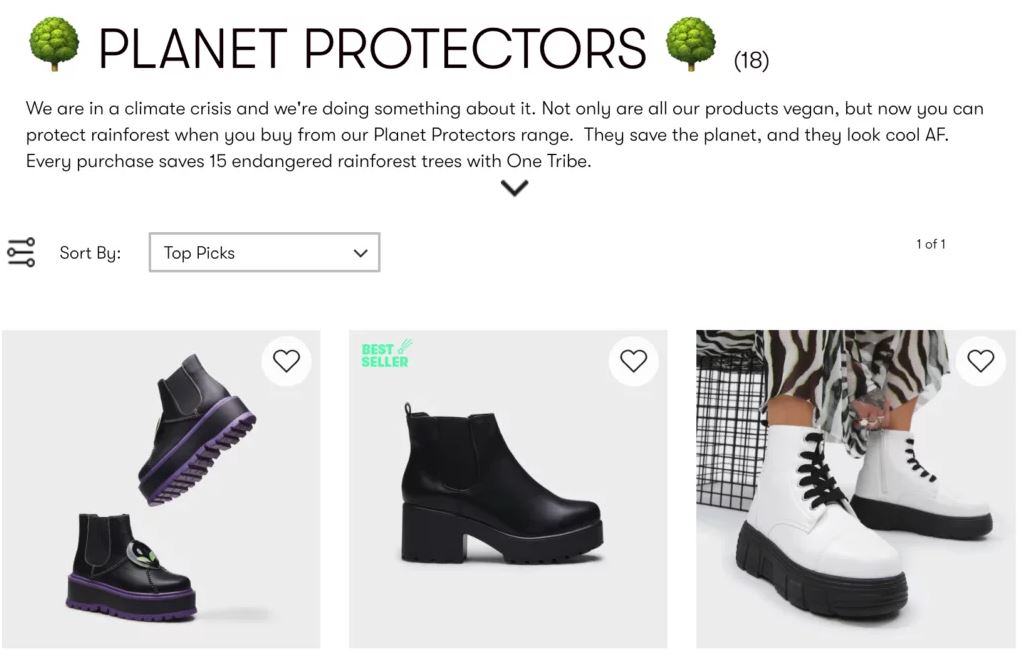
Increase Conversions
New technologies like One Tribe’s tree protection API is making it easier than ever for businesses to connect with conservation projects and track their impact. The One Tribe app is a platform that enables businesses to micro-donate a portion of their sales to tree protection projects around the world, and track the impact of their contributions in real-time. By using this technology, businesses can demonstrate their commitment to sustainability while also engaging with customers in a transparent and impactful way.
This is a particularly useful tool when it comes to acquiring new customers and increasing conversions. Climate action incentives can be used by businesses to attract and retain customers who prioritise environmental sustainability. Offering incentives such as donating a fixed number of trees to environmental causes can appeal to consumers who are increasingly concerned about the impact of their purchases on the planet.
Fintech business Claro Money launched a climate action campaign aiming to protect 1 million trees with newly acquired customers. The team achieved a high-impact and visually compelling campaign, attracting attention and achieving cut-through on busy social platforms. With a calendar of updates and supporting marketing materials, the campaign delivered significant conversion results across all channels, resulting in increased sign-ups and a 33.7% reduction in cost per acquisition.
Each user that joined Claro’s email list was instantly rewarded with 25 trees, protected in their name, across certified conservation projects worldwide. A visual tree counter and supporting marketing materials highlighted the progress and showcased the 1 million tree milestone throughout the campaign to new customers and existing users of the Claro Money application.
Improve Your Brand Identity
Another important factor to consider when choosing climate action incentives is the impact that sustainability can have on a company’s brand identity and persona.
Brands and businesses are recognising the need to become more sustainable, not only to meet consumer demands but also to do their part in reducing their existing impact on the planet. Supporting climate action incentives can help brands become more sustainable while also helping grow their consumer base.
By promoting their commitment to sustainability and partnering with conservation projects, businesses can attract new customers who share similar values and create brand loyalty. The benefits of climate action incentives go beyond just acquiring new customers, as they can also lead to positive public relations, increased sales, and improved brand reputation.
In conclusion, tree protection is a powerful tool for businesses to increase sales and demonstrate their commitment to sustainability. By partnering with companies that specialise in environmental practices and using technologies like One Tribe’s climate action API, businesses can connect with conservation projects around the world and inspire customers to buy from brands that give back to the planet.
At One Tribe, we are committed to working with businesses to identify areas where they can reduce their carbon footprint, develop strategies for implementing sustainability initiatives, and measure and report on progress towards sustainability goals.
climate action incentives, one tribe climate action, certified climate action, certifying climate action, certification for environmental action, how to improve my business carbon footprint, how to take climate action, incentives to increase sales,
One Tribe is a Climate Action Platform enabling businesses and their customers to make a positive environmental impact.
Eric currently works as an independent consultant at the intersection of nature and climate, focused on catalysing market and non-market solutions to drive the just transition.
He previously was Head of Product at Earthshot Labs, supporting nature conservation and restoration projects across the global south secure project finance. Prior to Earthshot Labs, Eric led nature-based carbon project development for Gorongosa National Park in Mozambique and founded the Carbon Cooperative, a global alliance of leading nature conservation and restoration practitioners exploring carbon finance. After serving in the Peace Corps in Mozambique out of university, he spent much of his 20s working in community-based conservation and ecosystem restoration efforts in Sub-Saharan Africa interspersed with two startup ventures as co-founder and CEO of a mental health tech startup and COO of a sustainable coffee company. Eric has a dual Masters in Environmental Engineering and Environmental Policy from Stanford University where he was a NSF Graduate Research Fellow and a BS in Environmental Engineering from Tufts University.
Alan is a risk management thought-leader, superconnector, and FinTech pioneer. His mission is to enable an Earth Positive economy which includes nature in global accounting systems.
Alan is Founder of Generation Blue, a venture studio dedicated to planetary game changers powered by exponential technologies. Previously, Alan established Natural Capital Markets at Lykke AG, pioneering blockchain based forestry and carbon backed tokens. Alan has over two decades of risk management experience advising global financial institutions, and was a founding member of the RiskMetrics Group, a JPMorgan spin-off. Alan is an investor and advisor to regenerative impact ventures, including TreeBuddy.Earth, Regenativ, and Vlinder Climate.
Lori Whitecalf made history when she became the first woman to be elected Chief of Sweetgrass First Nation in 2011. She served three terms of office from 2011-2017.
Lori took a two-year hiatus from leadership to expand the family ranch and serve as the FSIN Senior Industry Liaison. She was re-elected on November 29. 2019 and again on November 30, 2021, as Chief of Sweetgrass. Chief Whitecalf practises a traditional lifestyle of hunting, fishing and gathering. She currently sits on the following boards: Saskatchewan Indian Institute of Technology, FSIN Lands and Resource Commission, Battle River Treaty 6 Health Centre and Battleford Agency Tribal Chiefs Executive Council, FSIN Women’s Commission.
Tina is the Chief Business Officer for MLTC Industrial Investments, the Economic Development arm of the Meadow Lake Tribal Council. She has a diverse background of experience. Having spent 15 years as a municipal Chief Operating Officer, 20 years involved in Saskatchewan’s Health Authority Board Keewatin Yatthe and 9 years with Northern Lights Board of Education.
She continues as a Board Member with Beaver River Community Futures supporting small business development in her home region. Tina brings a wealth of experience in a variety of fields and many connections to the Indigenous communities of Northern Saskatchewan. In addition Tina holds a BA Advanced from the U of S, a Certificate in Local Government Authority from the U of R and is certified as a Professional Economic Developer for Saskatchewan and a certified Technician Aboriginal Economic Developer (TAED).
Tootoosis’ career spans 40+ years in HRM, political leadership, and Indigenous economic development, as a dedicated bridge builder and advocate for Indigenous causes.
As a key member of the Saskatoon Regional Economic Development Authority (SREDA) team since 2021, he develops strategies for the Truth and Reconciliation Commission final report and Call to Action #92.
He is a graduate of the First Nations University of Canada and a certified Professional Aboriginal Economic Developer. Spearheading various community initiatives while serving as a Chair of the SIEDN while directing ILDII and WIBF. Founder of MGT Consulting Tootoosis is based in Saskatoon, Treaty Six Territory.
Cy Standing (Wakanya Najin in Dakota) has a long and distinguished career including serving overseas as an Electronics Technician in the Royal Canadian Air Force, former Chief of Wahpeton Dakota Nation, former Vice Chief of the Federation of Saskatchewan Indigenous Nations (FSIN), past Executive Director of Community Development Branch of the Department of Northern Saskatchewan as well as an Order in Council appointment to the Federal Parole Board.
Mr. Standing has served as a Director on many Profit and Non-Profit Corporate Boards, including serving as a Director for Affinity Credit Union with assets of over six billion dollars as well as IMI Brokerage and Wanuskewin and is currently a member of the One Tribe Indigenous Carbon Board.